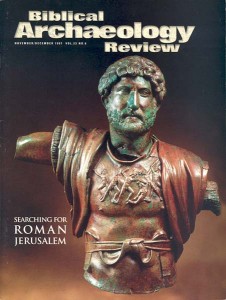Ostraca Perform Well on Lab Tests: Awarded an “A” for Authentic
Sidebar to: Three Shekels for the Lord
Whenever an exceptional artifact without a provenance appears on the antiquities market, serious questions arise about its authenticity. That is the case with the two ostraca described in the accompanying article.
Obviously the three authors of the scholarly report on the inscriptions are satisfied that the texts are authentic. So are other prominent paleographers who have examined them—including André Lemaire of the Institute of Semitic Studies at the College de France; P. Kyle McCarter, Jr., of Johns Hopkins University; and Frank Moore Cross of Harvard University.
In addition, the ostraca have been subjected to a number of laboratory tests to determine whether they might be fakes.
A Finnish laboratory in Helsinki called Mikrofokus Oy, examined the ostraca with a scanning electron microscope (SEM) fitted with an energy dispersive X-ray microanalyzer (EDS). A SEM-EDS test can determine the elemental composition of the inks, the terra-cotta and any tiny soil fragments or residues on the ostraca’s surfaces.
Previous testing by McCrone Research Institute of Chicago had discovered that the ink on the ostraca is similar in composition to ink from the Dead Sea Scrolls. Mikrofokus Oy confirmed that finding and discovered that the ostraca’s “inscribed surfaces [are] partly covered with a white material” that “seems to cover the terracotta and/or carbon black” (the ink) and “can be scraped off easily.”
Already a library member? Log in here.
Institution user? Log in with your IP address.

